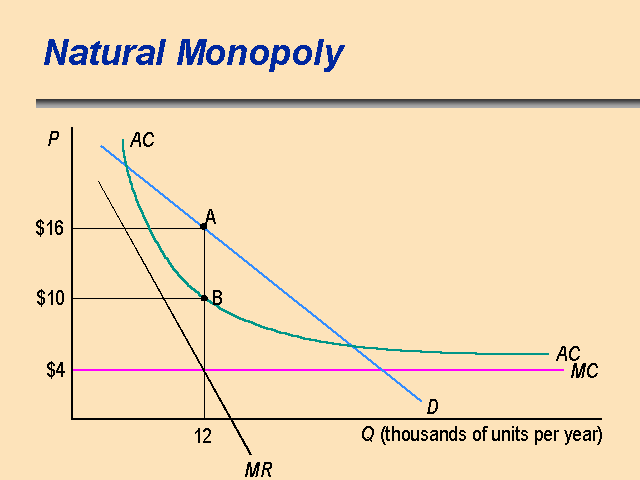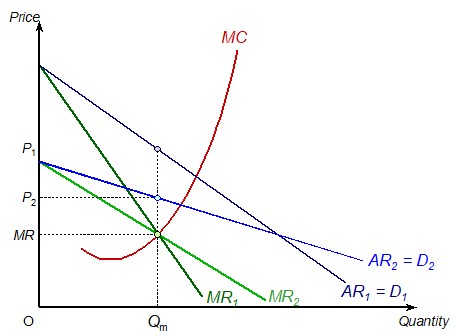Introduction
The public transport system in Hong Kong is very sophisticated and highly developed and encompasses both private and public transport. The majority of the people in Hong Kong commute by public transport, which is considered to be one of the most efficient in the world. The recent introduction of the Octopus card, which does away with the traditional mode of payment by cash, has enabled the public to conveniently commute with one card in all the modes of public transport.
Hong Kong has a very efficient network of trains, and they are operated by MTR in the urban regions of Hong Kong, the Kowloon peninsula, and the northern fringes of Hong Kong Island. Trams in Hong Kong are owned by a government company, The Hong Kong Tramways which operates trams on an exclusive basis in northern Hong Kong Island. The primary tram services connect the central business districts of Hong Kong with Victoria Park. The MTR system has ten lines connecting 82 railway stations and 68 minor stops. While eight of these lines cater to the standard metro services, the Airport Express directly connects the International Airport with the city center, and another connects the city center with Hong Kong Disneyland.
There is a facility known as light rail which functions more like a tram service and runs on streets along with other vehicles. The trams are run by the Hong Kong Tramways, which operates street cars with double decks. The rail system for trams in Hong Kong is thirteen kilometers in length and the track length is thirty kilometers. The trams operate together with other vehicles on the road. Bus services are one of the oldest means of public transport in Hong Kong. The public franchised bus services are operated by different companies. Bus services in Hong Kong are characterized by a very long history and presently there are five companies that operate public bus services on franchise. However, some of the buses which are not franchised also cater to the needs of commuters by being feeder services for residents in residential centers in the new territories. The biggest bus company in Hong Kong is The Kowloon Motor Bus Company Limited which was set up in 1933. The company boasts of a fleet of 4300 buses that operate on 420 routes with total employee strength that exceeds 13000. Citybus is another company that provides public bus services in Hong Kong and is particularly engaged in the operation of bus routes in residential areas connecting them to Shatin, City One and Kowloon Tong railway station. New World First Bus Services is also a major transport company in Hong Kong that provides transport services in Hong Kong Island.
Minibuses known as maxi cabs and taxis also operate through out Hong Kong. Hong Kong is known to have a very efficient taxi service and there are about 18000 taxis that serve over one million passengers everyday and represent about 11% of the daily passengers who use transport in Hong Kong. Surprisingly most of the taxis in Hong Kong use LPG to protect the environment. This facility was provided by the government in 2000 when all taxi owners were given financial assistance in replacing their taxis with LPG taxis. Almost 100% of the taxis run on LPG.
Ferry services comprise an important aspect of public transport in Hong Kong. Ferry operators have to be licensed by the government and they transport commuters between the out lying islands and inner Victoria Harbor as also the new towns.
Theme
The first rail service in Hong Kong was started in 1910 with the British Section of the Kowloon Canton Railway. In 1979, a rapid transit system was started and in 1982 the British Section began electrification. The rail network in Hong Kong had comprised of trains that were run by MTR Corporation Ltd. and Kowloon Canton Railway Corporation. The metro network in Hong Kong was operated by MTRC and the KCRC network connected the north western and north eastern new territories with Hong Kong. Recently there had been discussions to merge the operations of the MTR and Kowloon Canton Railway Corporation (KCRC), since they are both owned by the government. The objective was to bring about economies of scale and better efficiency (Press Release, 2006). While the merger was welcomed by MTR, it was opposed by KCRC. However the Hong Kong government officially merged the two companies and on April 11, 2006, the official announcement was made in regard to the merger of the two companies whereby KCRC granted service commission to MTRCL to operate its services for a 50 years period (Rail Merger Bill, 2006). The MTRCL now has six lines from Hong Kong Island to different destinations such as Lantau island, Tung Chung and Kowloon as also to the new territories. Hence MTRCL is clearly seen as having a monopoly in the provision of train services in Hong Kong. The following table gives the basis for the different types of market structures.
According to the above characteristics, the market structure of MTRCL in the railway industry is defined as “Natural Monopoly”.

In view of the highly specialized nature of the heavy rail industry which requires large investments, there are not many companies in this area throughout the world. Major companies include Go-Ahead, FirstGroup, Stagecoach , BP, National Express, HBOS and Alliance & Leicester. The economic characteristics of the railway industry are such that numerous barriers to entry have been imposed by the respective countries in which these industries operate (Nash, C. A. and Rivera-Trujillo, 2004). The US rail industry was deregulated in 1980 and the Canadian government had done the same in 1987. Some countries such as Japan, Sweden and Britain have brought in organizational reforms to allow competitors to operate in the market. According to Waters (1985) the pervasive nature of costs in the rail industry are such that train working costs, track and signaling costs, terminal costs and administrative costs prove to be very high for establishments and most are in the nature of being sunk costs that greatly reduce the profit margins of companies in the industry. Since the early days of the rail industry mainstream economists have concluded that the larger the size of the industry the greater its efficiency becomes in terms of accrual of benefits from the operation of economies of scale. The existence of large fixed costs as related to infrastructure in particular imply very high set up costs and once set up, the industry can benefit from economies of scale and hence the rail industry becomes a typical example of a natural monopoly (Guislain, P. and Kerf, M, 1995).
However the notion of prevalence of monopoly in the rail industry has been challenged by some theorists and economic analysts. The theory of contestable markets has considerably clarified the definition in terms of the concept of natural monopoly as relevant to the sub additive function of cost. It implies that if rail infrastructure is duplicated there is added inefficiency and hence natural monopoly conditions occur by themselves as a result of the operation of market forces. The theoretical means by which profits are maximized under monopoly are clearly depicted by the following diagram:

MC: Marginal Cost
MR: Marginal Revenue
AR: Average Revenue
However after the deployment of the network, the operating cost of rolling stock and rail transport services will be covered efficiently by more than a single company in being potential or actual competitors. Hence theorists have concluded that from the point of view of regulation, services and infrastructure can be handled in a number of other ways.
The role of private sector in the rail industry has started increasing and is resulting in the evolution of the industry in recent times. Such changes have begun to reshape the way in which governments address the pertinent regulatory challenge which is seen as a consequence of the changing nature of technical and economic characteristics of the railway industry. The regulation of the industry is slowly moving in the direction of schemes of public interventions that are in the nature of being flexible. Although such schemes do not entirely prevent government participation directly, there is clear evidence of the monopoly in the rail industry to be waning and gradually disappearing as a dominating model through out the world. There is now hardly any unique basis to regulate the rail industry in addressing new challenges. The general rule applied in the current scenario is to maintain simplicity and flexibility as far as possible.
The local currency credit ratings of the MTRC have reflected its close relationship and constant support by the government of Hong Kong. The market position of MTRC is quite robust with strong financial fundamentals that have been providing it ample support. Its ratings in foreign currencies are capped by the sovereign ratings of Hong Kong. It is a policy objective of the government of Hong Kong to maintain MTRC as a financially robust organization. The government is the single largest shareholder of the company and enjoys key rights and responsibility in managing its affairs (Consumer Council, 1999). Regarding contestability in MTRC, it has been observed that market participants such as franchised buses and cross boundary traffic vehicles do operate in ways which impact the competition by way of practices that reduce contestability. They can also adversely influence the economic efficiencies and free trade. Hence the need to ensure that the competitive environment also considers the interests of the private sector and that they move as per the prevailing regulations in order to ensure that the rewards of competition are not defeated.
Conclusion
Having examined the different means of public transport in Hong Kong, the role of the MTRC as the main provider of public transport services is most dominating since the service is efficient and available for connections between almost all locations. There has been a merger of the KCRC and MTRC in taking advantages of economies of scale and consolidation thus forming a stronger corporate body which is now almost free from competitors. The facility has come to occupy immense importance in proving to be an almost indispensable service for commuters in Hong Kong.
References
Colin Bamford, Transport Economics, 2006, Heinemann Educational Publishers Consumer Council’s Submission to Legislative Council’s Bills Committee on Mass Transit Railway Bill (1999). Web.
Graham Mallard and Stephen Glaister, Transport Economics: Theory, Application and Policy, 2008, Palgrave MacMillan.
Guislain, P. and Kerf, M. (1995) “Concessions – The Way to Privatize Infrastructure Sector Monopolies”, Viewpoint 59. Finance and Private Sector Development Department. The World Bank: Washington, D.C.
Mass Transit Railway Bye Laws. Web.
Nash, C. A. and Rivera-Trujillo, C. (2004) “Rail regulatory reform in Europe- principles and practice”, STELLA Focus Group 5 Synthesis Meeting, Athens.
Robert Cervero, Private Financing and Sustainable Urbanism in Hong Kong and Tokyo.
Waters II, W. G. (1985) “Rail Cost Analysis”. In Button, K. J. and Pittfield, D. E. (eds.). International Railway Economics. Gower: Aldershot.